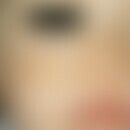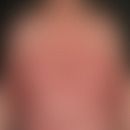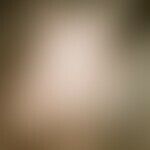Synonym(s)
HistoryThis section has been translated automatically.
Nödl, 1986
DefinitionThis section has been translated automatically.
Rare growth disorder of the scalp hairs occurring in children with greatly increased depilatability of the scalp hairs.
You might also be interested in
EtiopathogenesisThis section has been translated automatically.
ManifestationThis section has been translated automatically.
ClinicThis section has been translated automatically.
Already with a light pull the hairs can be depilated in tufts and painlessly. Often several, sometimes larger bald patches. Prompt regrowth of new hairs. The hair appears clinically inconspicuous.
Syndromal occurrence: The "loose anagen hair syndrome" can occur in the context of RASopathies, such as Noonan-like syndrome (Mazzanti syndrome), with cardiological defects, growth retardation, hyperpigmented skin.
HistologyThis section has been translated automatically.
DiagnosisThis section has been translated automatically.
In the trichogram almost exclusively thin anagen hairs without root sheaths.
TherapyThis section has been translated automatically.
Progression/forecastThis section has been translated automatically.
Not exactly known, possibly it is a temporary maturation disorder with regression during puberty. This course distinguishes the clinical picture from the Short Anagen Hair Syndrome, which apparently shows no regression tendencies.
LiteratureThis section has been translated automatically.
- Gripp KW et al (20143) Expanding the SHOC2 mutation associated phenotype of Noonan syndrome with loose anagen hair: structural brain anomalies and myelofibrosis. Am J Med Genet A 161A: 2420-1430
- Mazzanti L et al (2003) Noonan-like syndrome with loose anagen hair: A new syndrome? On J Med Genet 118A: 279-286
- Tosti A et al (2002) Loose anagen hair syndrome and loose anagen hair. Arch Dermatol 138: 521-522
- Chapalain V et al (2002) Is the loose anagen hair syndrome a keratin disorder? A clinical and molecular study. Arch Dermatol 138: 501-506
- Mazzanti L et al (2003) Noonan-like syndrome with loose anagen hair: a new syndrome? On J Med Genet 118A: 279-286
- Nödl F, Zaun H, Zinn KH (1986) Increased epilatability of anagen hairs in children as a result of a maturation defect of the follicles with disturbed attachment of hair shaft and root sheath. The phenomenon of easily pullable hairs. Nude Dermatol 12: 55-57
- Fence H (1984) Differential diagnosis of alopecia in children. In: Happle R, Grosshans E (Eds). Pediatric dermatology. Springer, Berlin, pp. 157-166
Incoming links (8)
Anagen hair, loose; Hypotrichosis simplex due to a short anagen phase; Loose anagen-hair of childhood; Loose anagen syndromes; Noonan-like syndrome with loose anagen hair; Phenomenon of easily pullable hair; Rasopathies (overview); Short anagen hair syndrome;Disclaimer
Please ask your physician for a reliable diagnosis. This website is only meant as a reference.





